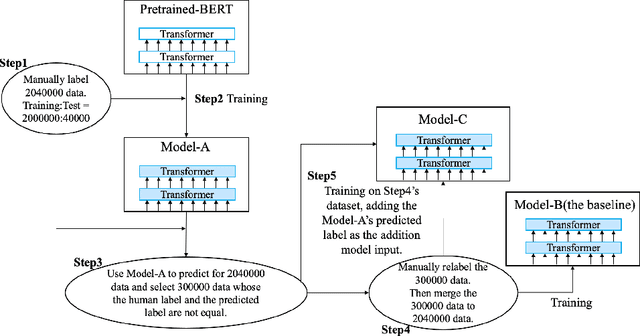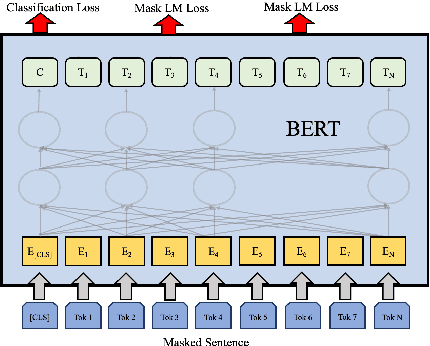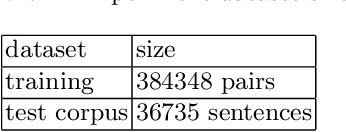Tong Guo
DIFNet: Decentralized Information Filtering Fusion Neural Network with Unknown Correlation in Sensor Measurement Noises
Aug 26, 2025Abstract:In recent years, decentralized sensor networks have garnered significant attention in the field of state estimation owing to enhanced robustness, scalability, and fault tolerance. Optimal fusion performance can be achieved under fully connected communication and known noise correlation structures. To mitigate communication overhead, the global state estimation problem is decomposed into local subproblems through structured observation model. This ensures that even when the communication network is not fully connected, each sensor can achieve locally optimal estimates of its observable state components. To address the degradation of fusion accuracy induced by unknown correlations in measurement noise, this paper proposes a data-driven method, termed Decentralized Information Filter Neural Network (DIFNet), to learn unknown noise correlations in data for discrete-time nonlinear state space models with cross-correlated measurement noises. Numerical simulations demonstrate that DIFNet achieves superior fusion performance compared to conventional filtering methods and exhibits robust characteristics in more complex scenarios, such as the presence of time-varying noise. The source code used in our numerical experiment can be found online at https://wisdom-estimation.github.io/DIFNet_Demonstrate/.
Cross-Block Fine-Grained Semantic Cascade for Skeleton-Based Sports Action Recognition
Apr 30, 2024Abstract:Human action video recognition has recently attracted more attention in applications such as video security and sports posture correction. Popular solutions, including graph convolutional networks (GCNs) that model the human skeleton as a spatiotemporal graph, have proven very effective. GCNs-based methods with stacked blocks usually utilize top-layer semantics for classification/annotation purposes. Although the global features learned through the procedure are suitable for the general classification, they have difficulty capturing fine-grained action change across adjacent frames -- decisive factors in sports actions. In this paper, we propose a novel ``Cross-block Fine-grained Semantic Cascade (CFSC)'' module to overcome this challenge. In summary, the proposed CFSC progressively integrates shallow visual knowledge into high-level blocks to allow networks to focus on action details. In particular, the CFSC module utilizes the GCN feature maps produced at different levels, as well as aggregated features from proceeding levels to consolidate fine-grained features. In addition, a dedicated temporal convolution is applied at each level to learn short-term temporal features, which will be carried over from shallow to deep layers to maximize the leverage of low-level details. This cross-block feature aggregation methodology, capable of mitigating the loss of fine-grained information, has resulted in improved performance. Last, FD-7, a new action recognition dataset for fencing sports, was collected and will be made publicly available. Experimental results and empirical analysis on public benchmarks (FSD-10) and self-collected (FD-7) demonstrate the advantage of our CFSC module on learning discriminative patterns for action classification over others.
Query-dominant User Interest Network for Large-Scale Search Ranking
Oct 10, 2023



Abstract:Historical behaviors have shown great effect and potential in various prediction tasks, including recommendation and information retrieval. The overall historical behaviors are various but noisy while search behaviors are always sparse. Most existing approaches in personalized search ranking adopt the sparse search behaviors to learn representation with bottleneck, which do not sufficiently exploit the crucial long-term interest. In fact, there is no doubt that user long-term interest is various but noisy for instant search, and how to exploit it well still remains an open problem. To tackle this problem, in this work, we propose a novel model named Query-dominant user Interest Network (QIN), including two cascade units to filter the raw user behaviors and reweigh the behavior subsequences. Specifically, we propose a relevance search unit (RSU), which aims to search a subsequence relevant to the query first and then search the sub-subsequences relevant to the target item. These items are then fed into an attention unit called Fused Attention Unit (FAU). It should be able to calculate attention scores from the ID field and attribute field separately, and then adaptively fuse the item embedding and content embedding based on the user engagement of past period. Extensive experiments and ablation studies on real-world datasets demonstrate the superiority of our model over state-of-the-art methods. The QIN now has been successfully deployed on Kuaishou search, an online video search platform, and obtained 7.6% improvement on CTR.
The Re-Label Method For Data-Centric Machine Learning
Feb 09, 2023Abstract:In industry deep learning application, our manually labeled data has a certain number of noisy data. To solve this problem and achieve more than 90 score in dev dataset, we present a simple method to find the noisy data and re-label the noisy data by human, given the model predictions as references in human labeling. In this paper, we illustrate our idea for a broad set of deep learning tasks, includes classification, sequence tagging, object detection, sequence generation, click-through rate prediction. The experimental results and human evaluation results verify our idea.
A Comprehensive Exploration of Pre-training Language Models
Jun 22, 2021
Abstract:Recently, the development of pre-trained language models has brought natural language processing (NLP) tasks to the new state-of-the-art. In this paper we explore the efficiency of various pre-trained language models. We pre-train a list of transformer-based models with the same amount of text and the same training steps. The experimental results shows that the most improvement upon the origin BERT is adding the RNN-layer to capture more contextual information for the transformer-encoder layers.
Learning From How Human Correct
Jan 30, 2021



Abstract:In industry NLP application, our manually labeled data has a certain number of noisy data. We present a simple method to find the noisy data and relabel them manually, meanwhile we collect the correction information. Then we present novel method to incorporate the human correction information into deep learning model. Human know how to correct noisy data. So the correction information can be inject into deep learning model. We do the experiment on our own text classification dataset, which is manually labeled, because we relabel the noisy data in our dataset for our industry application. The experiment result shows that our method improve the classification accuracy from 91.7% to 92.5%. The 91.7% baseline is based on BERT training on the corrected dataset, which is hard to surpass.
Predictions For Pre-training Language Models
Nov 18, 2020



Abstract:Language model pre-training has proven to be useful in many language understanding tasks. In this paper, we investigate whether it is still helpful to add the specific task's loss in pre-training step. In industry NLP applications, we have large amount of data produced by users. We use the fine-tuned model to give the user-generated unlabeled data a pseudo-label. Then we use the pseudo-label for the task-specific loss and masked language model loss to pre-train. The experiment shows that using the fine-tuned model's predictions for pseudo-labeled pre-training offers further gains in the downstream task. The improvement of our method is stable and remarkable.
Content Enhanced BERT-based Text-to-SQL Generation
Nov 27, 2019


Abstract:We present a simple methods to leverage the table content for the BERT-based model to solve the text-to-SQL problem. Based on the observation that some of the table content match some words in question string and some of the table header also match some words in question string, we encode two addition feature vector for the deep model. Our methods also benefit the model inference in testing time as the tables are almost the same in training and testing time. We test our model on the WikiSQL dataset and outperform the BERT-based baseline by 3.7% in logic form and 3.7% in execution accuracy and achieve state-of-the-art.
Revisiting Semantic Representation and Tree Search for Similar Question Retrieval
Sep 06, 2019



Abstract:This paper studies the performances of BERT combined with tree structure in short sentence ranking task. In retrieval-based question answering system, we retrieve the most similar question of the query question by ranking all the questions in datasets. If we want to rank all the sentences by neural rankers, we need to score all the sentence pairs. However it consumes large amount of time. So we design a specific tree for searching and combine deep model to solve this problem. We fine-tune BERT on the training data to get semantic vector or sentence embeddings on the test data. We use all the sentence embeddings of test data to build our tree based on k-means and do beam search at predicting time when given a sentence as query. We do the experiments on the semantic textual similarity dataset, Quora Question Pairs, and process the dataset for sentence ranking. Experimental results show that our methods outperform the strong baseline. Our tree accelerate the predicting speed by 500%-1000% without losing too much ranking accuracy.
Using Database Rule for Weak Supervised Text-to-SQL Generation
Jul 31, 2019



Abstract:We present a simple way to do the task of text-to-SQL problem with weak supervision. We call it Rule-SQL. Given the question and the answer from the database table without the SQL logic form, Rule-SQL use the rules based on table column names and question string for the SQL exploration first and then use the explored SQL for supervised training. We design several rules for reducing the exploration search space. For the deep model, we leverage BERT for the representation layer and separate the model to SELECT, AGG and WHERE parts. The experiment result on WikiSQL outperforms the strong baseline of full supervision and is comparable to the start-of-the-art weak supervised mothods.
 Add to Chrome
Add to Chrome Add to Firefox
Add to Firefox Add to Edge
Add to Edge